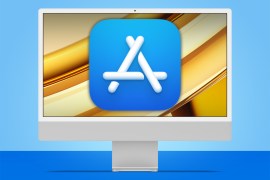Guitar Hero Live review
Tonight, you're a rock'n'roll star... but is the new GH game more Noel G or Kenny G?
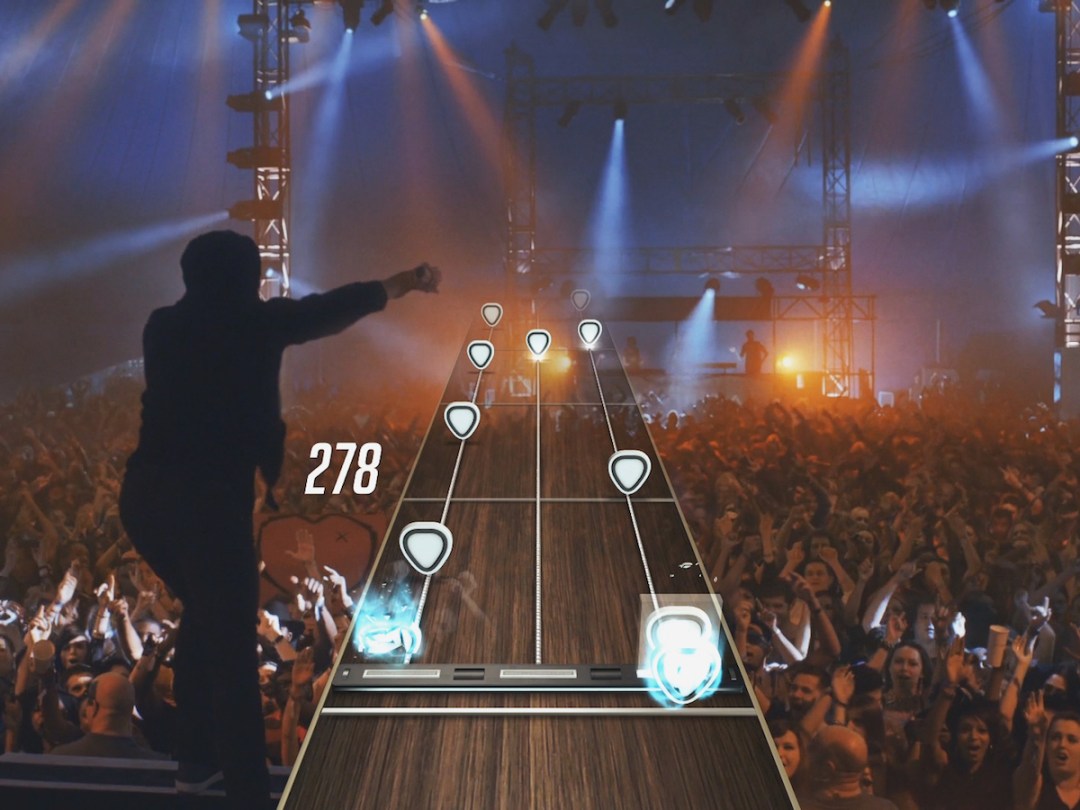
There are two kinds of reunion tours: The Stone Roses Approach, where a band triumphantly returns to the stage amid huge nostalgic expectation and plays only old songs, and The Blur Approach, where the nostalgia is augmented by a whole load of new stuff.
Neither approach is ‘right’, but where Rock Band 4 is Ian Brown and co, Guitar Hero Live hopes to replicate the same rave reviews that Blur’s comeback record received earlier this year.
F**k Buttons
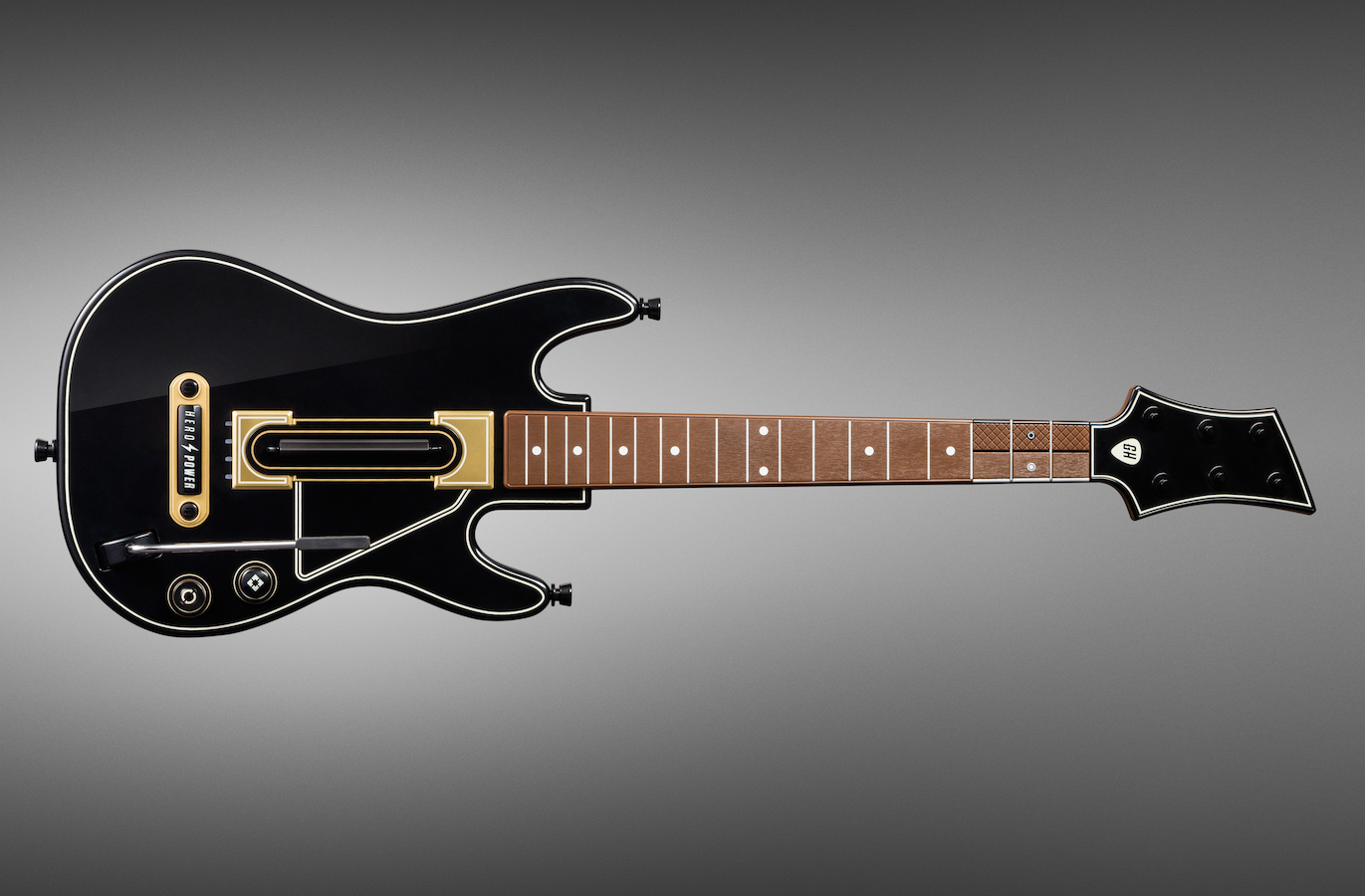
The biggest change to the way Guitar Hero Live plays will be apparent as soon as you pick up the redesigned axe. Rather than a single row of five coloured buttons, the new guitar has two adjacent rows of three. The concept, however, remains unchanged: as notes flow down the on-screen ‘highway’ you have to hold the corresponding button on the guitar’s neck and hit the strum bar as the indicator passes through the bottom.
As before, on lower difficulty levels what you play is so simplified that you almost have to ignore what you hear in order to hit each note, otherwise you find yourself trying to play what’s not there. It doesn’t help that the indicators can be a little confusing at first and even the slightest lapse in concentration can see you strumming away at the wrong row before realising your rookie mistake.
But once you get into it you’ll realise that they new axe does a much better job of representing the neck of a real guitar than the old Fisher-Price efforts. Previously, once you nailed reaching the orange button, all the game could really throw at you to make it harder was more notes. With the buttons split across two rows, however, there’s a whole extra dimension that provides a significant new challenge to master, even for Guitar Hero veterans.
Pairs of buttons can be held to play rudimentary barre chords, while on higher difficulty levels you’ll sometimes be required to contort your fingers in order to hold multiple, non-adjacent buttons on different rows. Despite having more buttons in total, though, they occupy a smaller space on the neck, which makes it tougher to visualise what your fingers should be doing.
Once you’ve attached the neck of your guitar, it can’t be removed – which should hopefully help to prevent the loose connections that often plagued the old controllers.
The biggest issue with the game’s previous guitars remains, though: the noisy strum bar. Unless you’ve got the telly jacked up to neighbour-bothering volume the clack-clack-clack of the strum bar can cut right through whatever song you’re playing, which rather spoils the illusion.
Oh well, you never liked Graham and Trish next door anyway, did you?
RELATED › Rock Band 4 review
Modeselektor
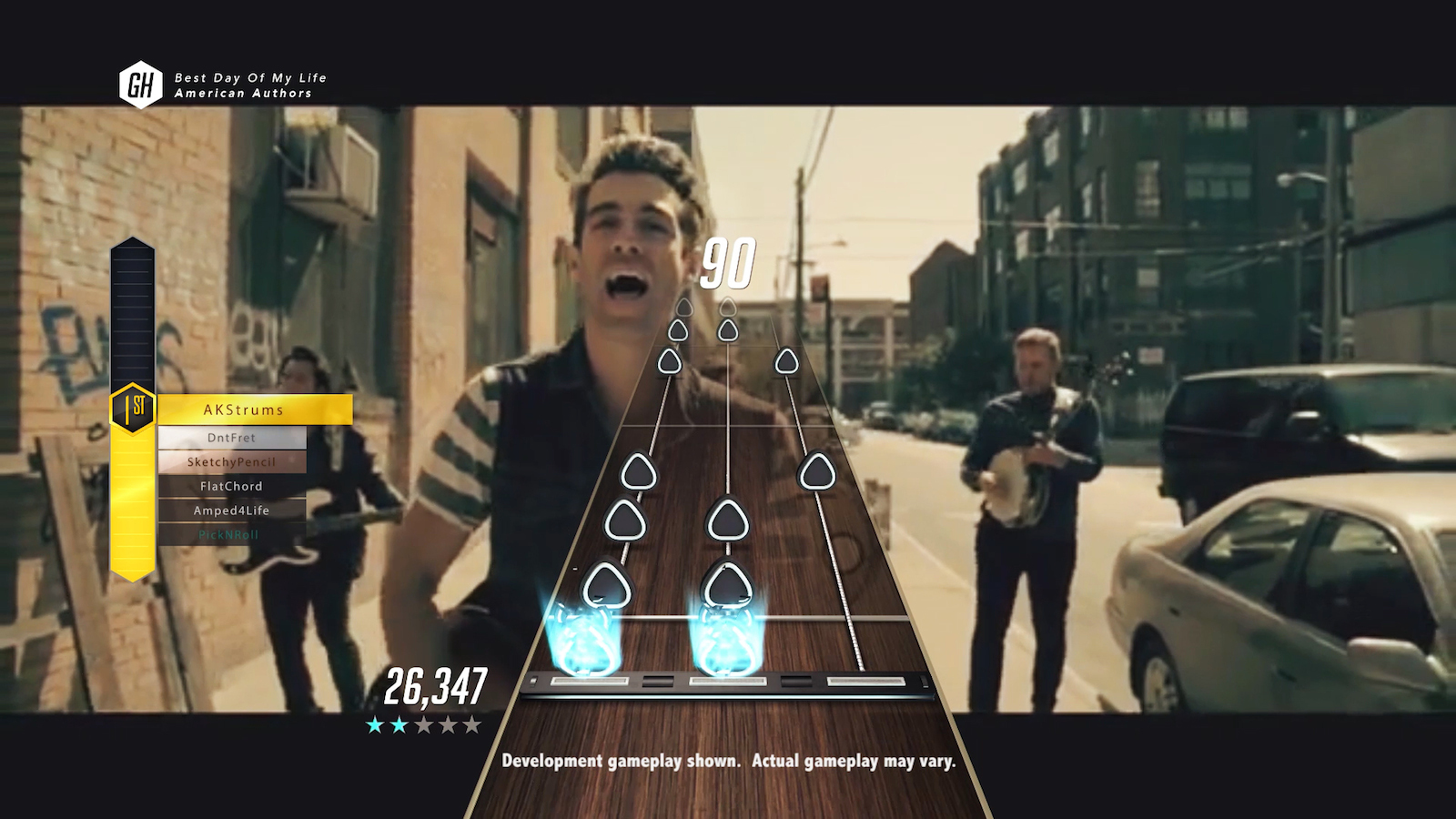
GH Live has two modes: Live and GHTV. The former is the game’s ‘career’ mode, in which you play guitar for a variety of bands at two fictional festivals, all recreated in first-person video rather than the tongue-in-cheek animation of previous games. The crowds and your bandmates are quick to respond to how well you play, which makes it feel very real when you’re hitting a load of bum notes. The audiences will even do things such as unfurl huge banners if you end a set in particularly triumphant manner.
Live mode doesn’t have the same feeling of career progression that previous games offered; each venue is more about reflecting the genre of music being played than showing a step up to the next level. The settings vary from woodland clearings illuminated by fairy lights (wimpy nu-folk, obviously) to huge outdoor enormo-gigs in the shadow of a big-city skyline (big-name alt-rock). This makes working your way up and reaching the end, only to triumphantly play a load of classic rock songs to a dingy little club, feel a little at odds with everything that’s gone before.
Still, it’s much more engrossing than the old cartoons, even if you only rarely have time to stop looking at the notes and take it all in. Sometimes it feels more like an attempt to make watching the game more interesting for anyone in the room with you – and with two-player mode limited to adding a second guitarist or a singer, rather than being able to put someone on bass, that might be quite important.
The overriding feeling is that this is very much a TopShop idea of what it’s like to be in a band these days. Besides its fairly brief lifespan (playing through all 42 songs won’t take more than a couple of nights) that’s the major criticism of Live mode – it’s all a bit blandly unimaginative.
The songs being played are often by well-known superstars – and the crowd reacts as such – but the band playing them onstage is made up of nobodies, albeit impossibly good-looking nobodies. They’re like a covers band that can command crowds of thousands, which is an idea that’s a little hard to get onboard with.
It’s a good job, then, that the gameplay itself makes up for it.
Which bands’ songs will you be playing?
TV on the Radio
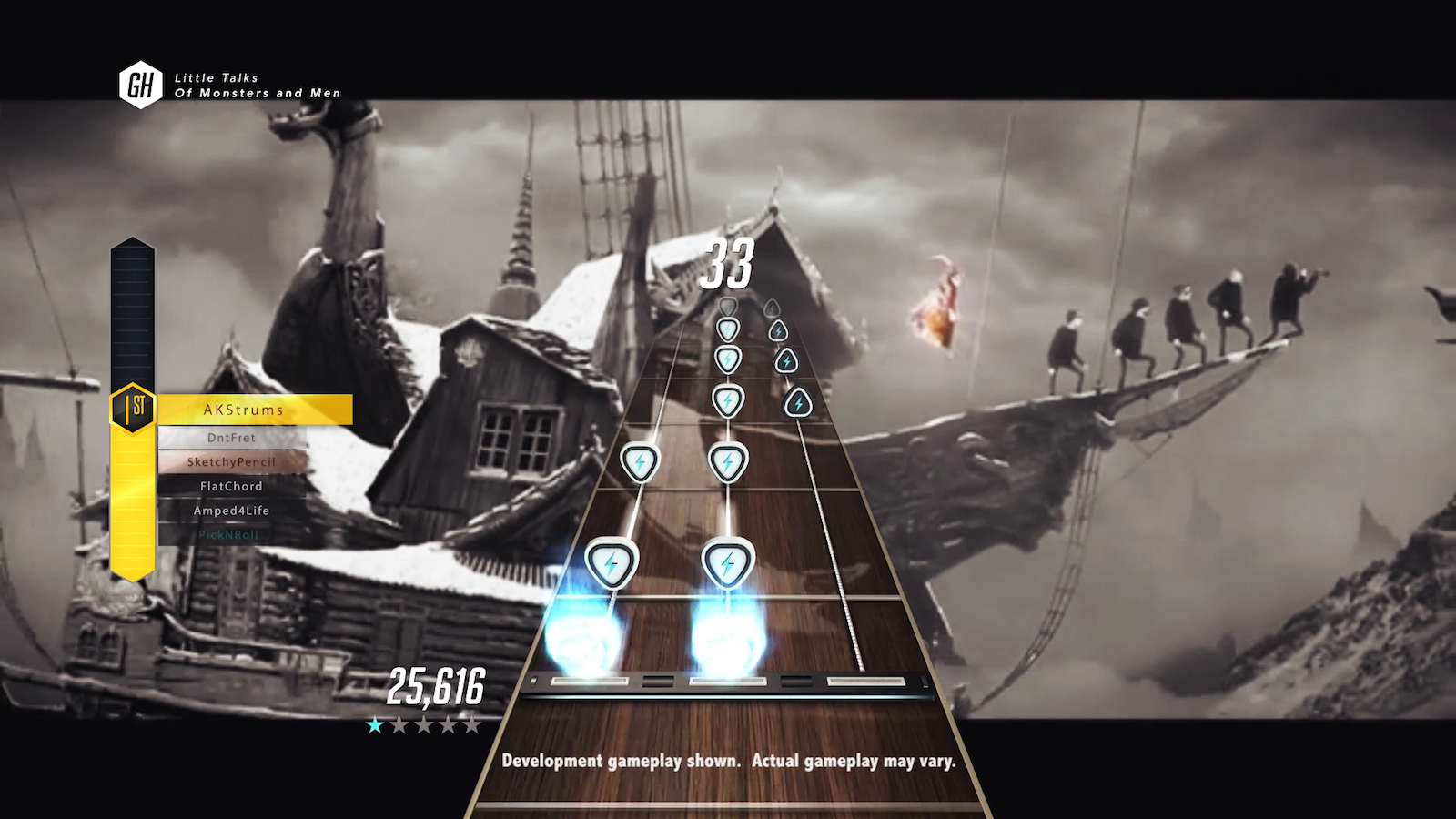
GHTV is an entirely new mode: essentially a playable music channel, with different genre-based shows scheduled every half an hour.
Within it, you get slightly different power-ups (such as one that allows you to blow all of the notes off the screen for a few seconds – useful if you’re getting swamped, but also a little against the spirit of the game) but the actual process of hitting the notes as they scroll down the screen is identical.
Familiar or not though, it is very easy to play GHTV for a very long time. You know that whole ‘Go on then, just one more…’ feeling that the best games have? Well you definitely get it here.
And that’s good, because outside of the channels GHTV works on a system of spending in-game currency in order to pick and choose which songs you play on-demand. In order to just choose a track and play it, you have to spend a play token, which you exchange for the coins you earn every time you complete a song or play the game on consecutive days.
You can spend actual money on them, or pay to unlock the entire catalogue for 24 hours (a feature not available during our review period), but over the course of a couple of nights we earned enough for 29 play tokens, so resorting to actual cash is probably only for the very impatient.
Guitar Hero on the road (or the bus, or the train, or the loo)
Although details are being saved for E3 in June, FreeStyleGames did confirm that there will be a smartphone version of Guitar Hero Live, and that it will offer the “same console experience”. In fact, I was even told there’d be a way to plug your mobile into your TV to play the mobile version of GHL on the big screen.
The Set Pistols
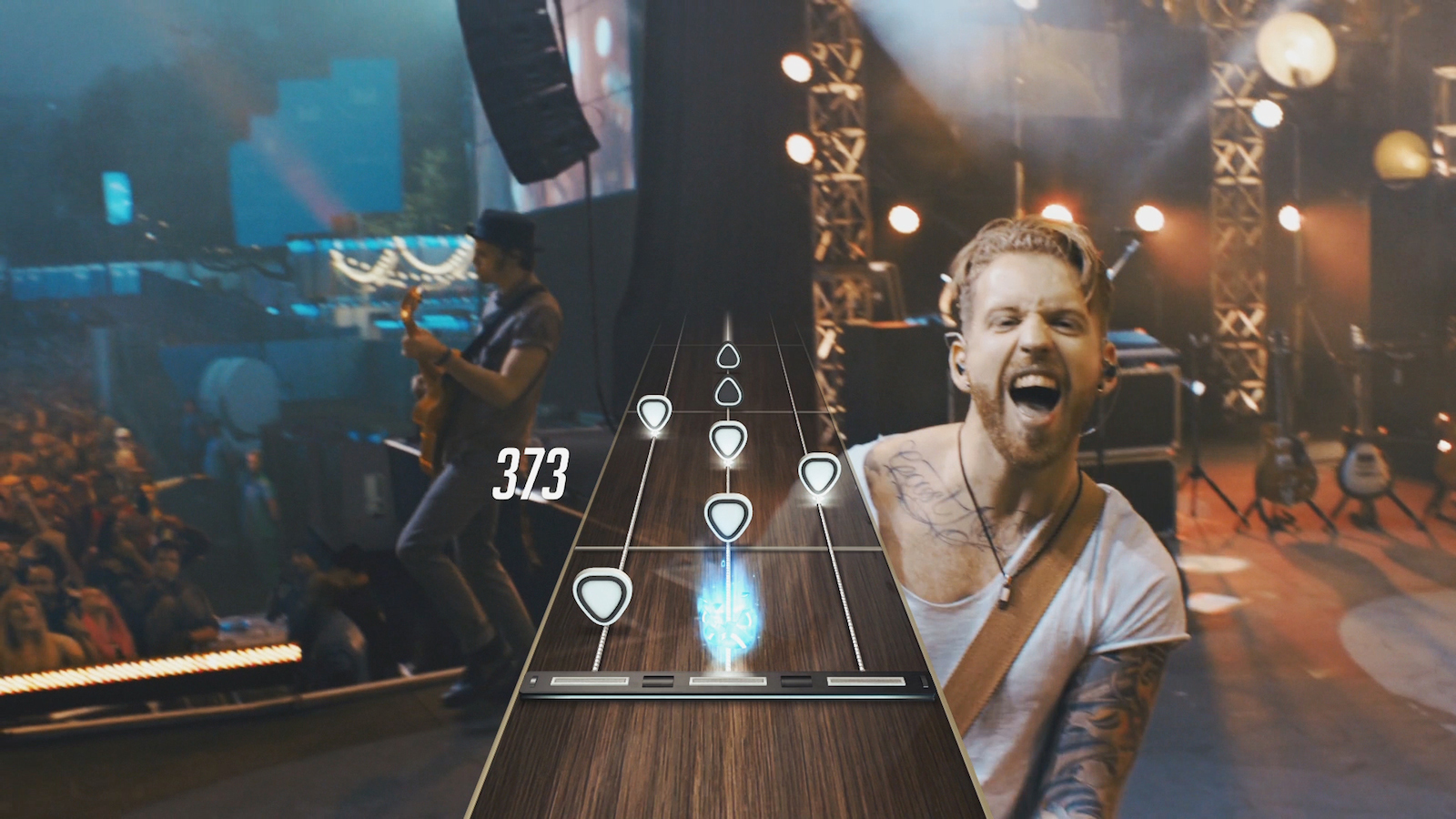
Music games often live or die based on what songs they allow you to perform and GH Live offers a mixed bag. This, of course, is entirely subjective but in Live mode its scope is just too wide. One minute you’re playing a Bring Me The Horizon tune, the next it’s Skrillex’s ‘Bangarang’. That suggests the makers don’t fully understand the culture of guitar-based music and a number of songs feel out of place. ‘Bangarang’ isn’t even fun to play.
DJ Hero’s genre-hopping mash-ups worked because of the nature of the game, but trying to unite so many styles here feels like a mistake. In GHTV it’s less of an issue – you can just play the channels you like – but it means completing the career-oriented side of the game can become a bit of a slog if there are whole sets of songs that you don’t like.
That’s not to say they shouldn’t have been included at all – as part of a GHTV channel they’d make more sense – but festivals succeed because they allow their audience to choose what bands they see, not insist that you visit every stage for a minimum of three songs.
With a more focused idea of what it wanted to be, GH Live could’ve worked much better, but making all sets compulsory feels counter intuitive.
RELATED › Geeky music projects to try at home
Guitar Hero Live verdict
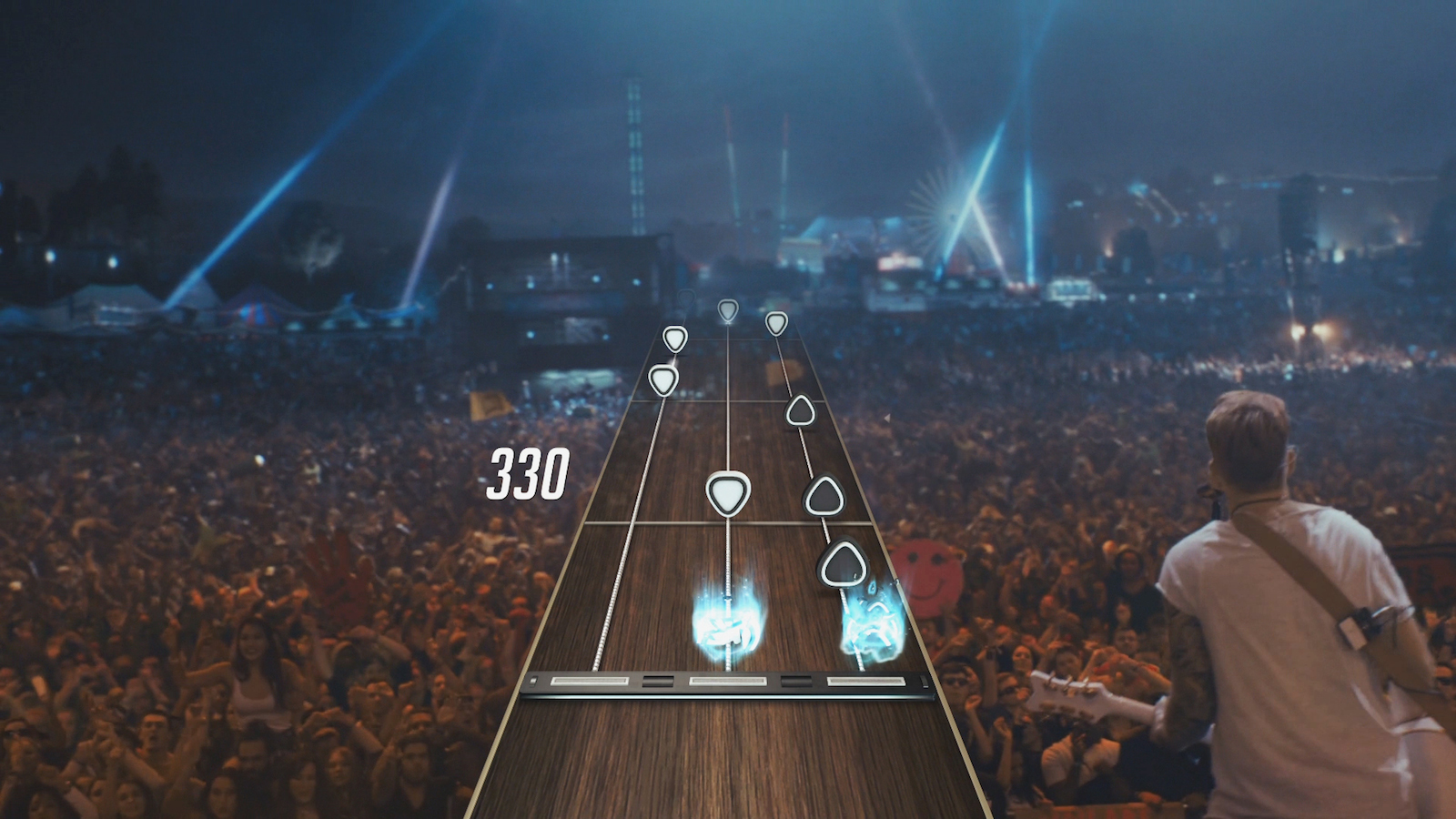
Trying to be all things to all people is often problematic, but a game of this type probably has very little option. How else do you appeal to the greatest number of people? Reduce the price and just sell track packs, allowing players to decide which direction they want to go? Perhaps, but some of the most enjoyable tracks to play on GH games have come from unexpected places. Indeed, Katy Perry’s ‘Waking Up In Vegas’ is far more fun to play than much of the angsty white-boy rock to be found here.
While Rock Band‘s return feels like a remastered special edition, GH should be commended for trying something new. In hardware terms it’s entirely successful and while it means buying new guitars, the changes are a resounding success.
While we have some reservations about the songs chosen by Freestyle Games to appear on Guitar Hero Live, its GHTV mode should provide the longevity that normally only DLC can provide, especially if new songs are added as often as promised.
Considering that’s all free, it makes the initial price tag easier to swallow, and the lack of any meaningful local multiplayer a little less important.
Now read this › The 10 best console games in the world right now
Stuff Says…
Setlist aside, Guitar Hero Live’s redesigned axe gives the series a new lease of life
Good Stuff
Redesigned guitar is a revelation
GHTV should extend lifespan
Bad Stuff
Noisy strum bar
Hit ‘n’ miss track list

